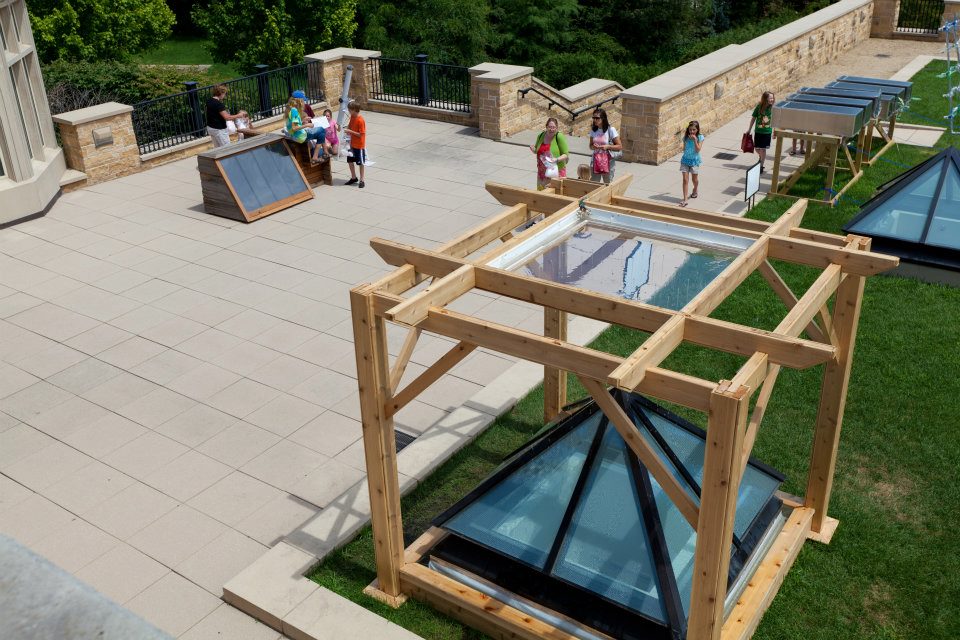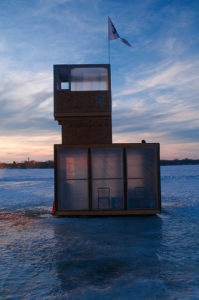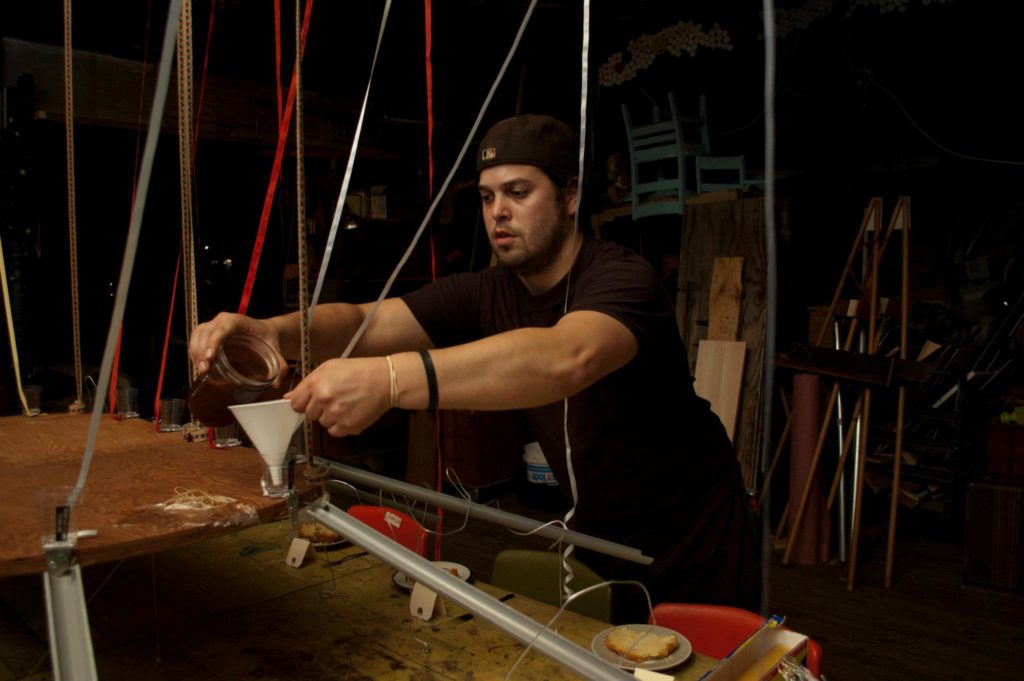Lucas Koski sees lawn art as a vehicle to diversifying funding sources
Lucas Koski, Asset Manager at Minneapolis-based Artspace, has always enjoyed a good spectacle. In high school he got into event production because he wanted to see bigger and better events than those he was documenting as part of his job for a local cable access TV station. His events were spectacles themselves, experiential productions that featured immersive installation art pieces, among other things.
“For a long time I always thought of myself as a producer or a manager of event production,” he says. “Then realized I was, in fact, an artist.”
He spent ten years working at Bedlam Theatre, a radical theatre company that previously had venues in Minneapolis and Saint Paul that have both since closed. Through this company he got involved with more social justice-oriented art and began thinking about what it meant to be a social practice artist.

“I became more aware of how art and social justice went hand-in-hand, and it got me thinking of the arts having place at the table of city health.”
This led to his current position at Artspace, the nation’s leader in art space development, specifically around long-term affordable housing for artists.
He still loves a spectacle, and also identifying and utilizing nontraditional approaches to common problems. And one problem that is certainly common in the worlds of arts and nonprofits is funding.
“I’ve been on the Knight Arts Challenge panel for years and I was always struck that people felt limited in where they could receive matching funds for their projects,” Koski explains. “Even in Minnesota, where there are a lot of opportunities for support, the same people [and organizations] are asked to provide matches again and again.”

And so Koski developed his idea for the Lawn Art Fund with that very thing in mind: developing new sources of funding by taking affordable, commissionable art directly to everyday people…and their lawns.
“I thought about how many people will spend $200 to $400 on a bench from Menard’s as an ornamental piece for their front lawn,” he recalls. “That expense is really for the beautification of the lawn for benefit of the public and the neighborhood, so that [mentality] could propel public arts forward and be a creative way to provide different sources of matching.”
The Lawn Art Fund will offer infrastructural support and matching funds for people to commission artwork to be displayed in their front yards. The fund will provide a one-to-one match for these pieces, so long as they are visually or experientially for the public benefit. That money will go towards commissioning artists to create pieces for the public to enjoy, and provide the additional investment benefit of beautifying the neighborhood.

“The Lawn Art Fund is trying to create accessibility in commissioning art,” Koski explains. “I also want to provide artists with creative opportunities to build their portfolios in the public sphere. For artists trying to make a living doing public art, there are many whose portfolios aren’t deep enough to chase a lot of those commission opportunities, especially corporate commissions. Through this they can build up their portfolio on a somewhat larger scale to then be able to access those opportunities available at the corporate level.”
Koski’s Lawn Art Fund was recently named among 29 winning projects in Saint Paul’s 2017 Knight Arts Challenge. The $36,000 he was awarded will be seed money for the “matches” awarded to those who want to display unique pieces of art on their front lawns (while also facilitating his own fund-matching obligations as a recipient of the Challenge grant).
Koski hopes to see all of the infrastructure and procedural elements in place and have the first projects completed by the fall of 2018. He plans to start with a few showcase projects in St. Paul’s Como neighborhood, possibly create some other showcase neighborhoods initially, then “open the floodgates citywide” and roll the concept out all throughout St. Paul. From there, he says he would love to figure out how to do this type of project in other cities, developing a fund to produce public art in the cities’ neighborhoods.
“What I really want to do is show people that if we can create a more diverse ecosystem of art funding throughout our cities and country and not just ask the usual suspects, we can get a pretty funky, wild, diverse ecosystem. And if that can happen, foundations like Knight might see some opportunities to spread their money across a wider network on projects that require minimal infrastructure investment.”

(1) How do you like to collaborate?
I was on a really great basketball team growing up and the best way team defense worked was everybody paying attention to each other but also to the opponent in front of them. I love collaborating when there is a great sense of team unity but also personal responsibility, and that buy-in is what makes me work with others as well.
(2) How do you a start a project?
I usually start anything by just talking out loud with a walk with my dog. Usually when I finish the sentence I have an idea, and I repeat it again and again until I like the way it sounds. Then I’ll run it past somebody.
(3) How do you talk about your value?
I think everything, including artwork, has both intrinsic and extrinsic value. The great thing about art is that it can mean something different to everyone, so I know that when I make art as an artist I’m usually making art for the 12-year-old mind inside my mind – I value art that is playful and dynamic and challenges me to think of the world in different ways, but that’s not the only way to experience it. The most important thing is how it impacts people individually.
(4) How do you define success?
Ten years later, if I have a good story that makes the person I’m telling it to feel like they experienced what it had to offer, then it was successful.
(5) How do you fund your work?
Hustle. Liquid assets.
